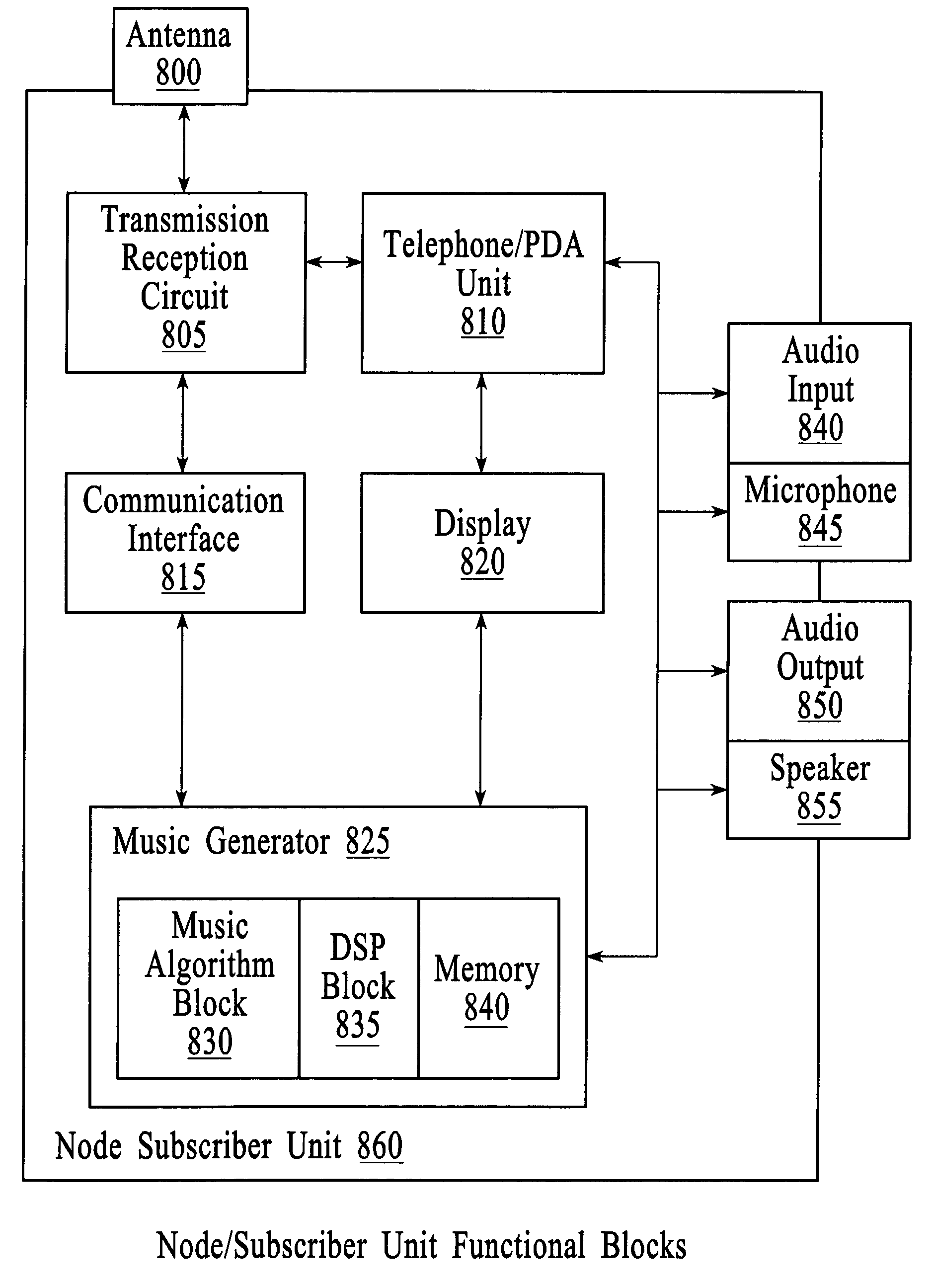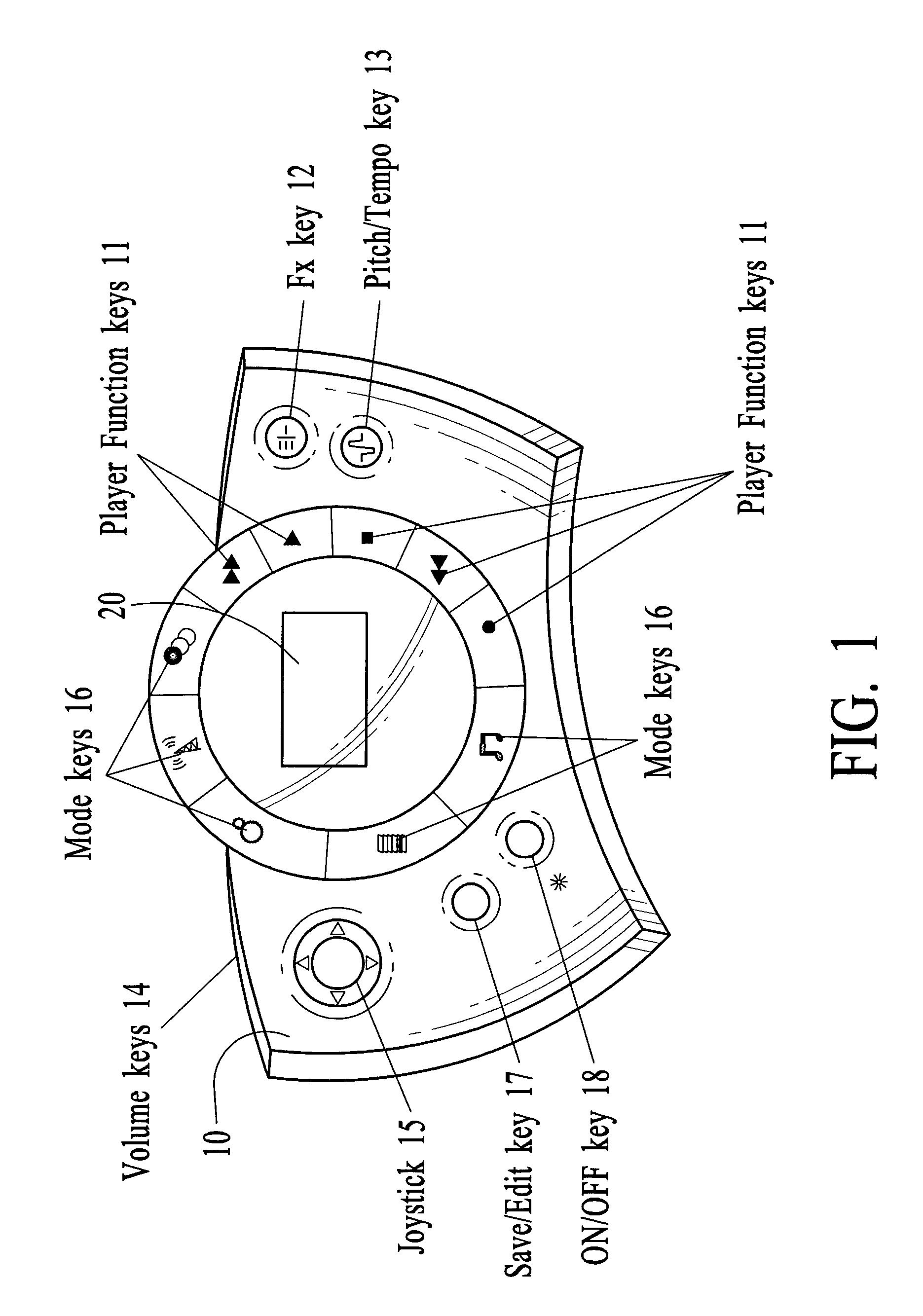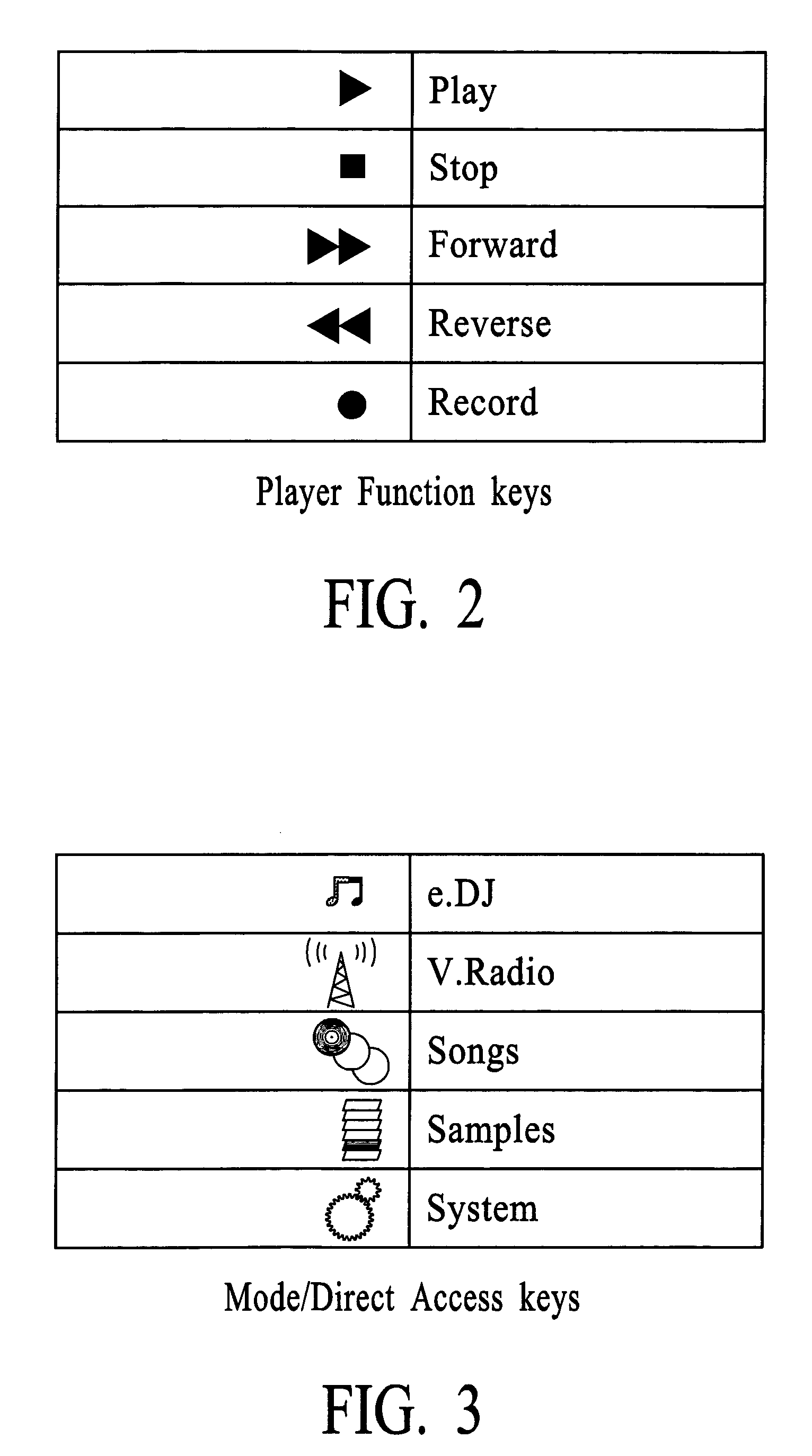Systems and methods for generating music using data/music data file transmitted/received via a network
a music data and network technology, applied in the field of systems and methods for creating, modifying, interacting with and playing music, can solve the problems of complex and expensive, system training or experience still needs substantial musical training, and music creation, particularly of any quality, to achieve the effect of facilitating the creation of music, reducing processing and/or storage requirements, and being easily modified or used
- Summary
- Abstract
- Description
- Claims
- Application Information
AI Technical Summary
Benefits of technology
Problems solved by technology
Method used
Image
Examples
Embodiment Construction
[0085]The present invention will be described in greater detail with reference to certain preferred and certain other embodiments, which may serve to further the understanding of preferred embodiments of the present invention. As described elsewhere herein, various refinements and substitutions of the various elements of the various embodiments are possible based on the principles and teachings herein.
[0086]In accordance with the present invention, music may be created (including by auto-composition), interacted with, played and implemented in a variety of novel ways as will be hereinafter described via numerous exemplary preferred and alternative embodiments. Included in such embodiments are what may be considered as top-down approaches to musical creation. Top-down as used herein generally means that a complete song structure for quality music is created for the end user as a starting point. This enables the user to immediately be in position to create quality music, with the user...
PUM
 Login to View More
Login to View More Abstract
Description
Claims
Application Information
 Login to View More
Login to View More - R&D
- Intellectual Property
- Life Sciences
- Materials
- Tech Scout
- Unparalleled Data Quality
- Higher Quality Content
- 60% Fewer Hallucinations
Browse by: Latest US Patents, China's latest patents, Technical Efficacy Thesaurus, Application Domain, Technology Topic, Popular Technical Reports.
© 2025 PatSnap. All rights reserved.Legal|Privacy policy|Modern Slavery Act Transparency Statement|Sitemap|About US| Contact US: help@patsnap.com



